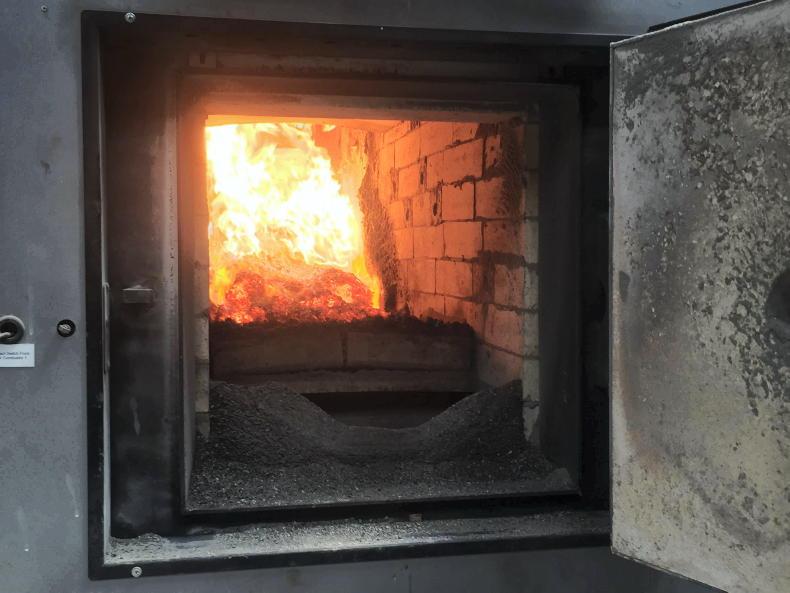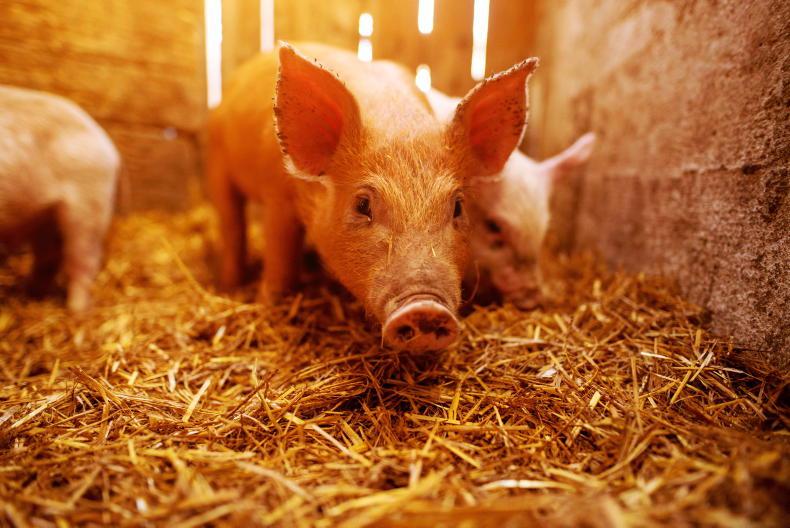In the latest edition of the Irish Farmers Journal energy efficiency series, we take a look at some of the key energy saving tips for the poultry and pig sectors. Both of these sectors are large users of energy for heat, ventilation, lighting and feed delivery. As with any sector which uses a lot of energy, there is always plenty of scope for savings from improving energy efficiency, especially for older farms, according to Teagasc’s Barry Caslin.
A common theme across all articles so far in the series has been the importance of monitoring energy on farms to help manage its use. This means understanding your energy bills and taking regular meter readings.
Most pig and poultry farms will be eligible for SEAI’s Support Scheme for Energy Audits which provides a voucher towards the cost of getting a professional energy audit completed.
Energy audits are very useful for highlighting and quantifying energy use on farm and showing the areas where savings can be made.
This article will run through the top tips for reducing energy use on pig and poultry farms.
Ventilation
Match duct and fan sizes to ventilation system.Clean and maintain fans, ducts and louvres to improve airflow.Replace old fans with energy-efficient models. Belt-driven fans use one-third less energy than direct-drive fans.Use recirculation fans to improve heat distribution and link this to first-stage fans to maintain normal airflow.Seal gaps around doors, walls, windows and louvres to reduce air leakage.Fit proprietary “bell mouths” to fans or “cones” to outlet fans. This increases aerodynamic efficiency by typically 10%.Heating
Position thermostats to avoid overheating buildings (avoid draughts/doors).Insulate roof, floors and walls (insulate concrete mass walls to the ground).Link heating and ventilation systems.Use heat recovery to pre-heat incoming air with warm extract air (savings of 10% to 25% can be achieved).Service boilers regularly and clean heat transfer surfaces.Replace aging boilers with energy-efficient models or renewable energy systems. Consider radiant heaters to heat floor area where appropriate and minimise air temperature rise.In the case of poultry, restrict chicks to smaller areas with zonal control/brooding curtains with a tight seal.Feeding
Consider fitting variable speed pumps to wet-feed and waste equipment. This can cut costs by 30% to 50%.Insulation
The walls and ceilings should be insulated to achieve suitable U-values (the rate of heat transfer through a structure).Check if the insulation has been damaged by pests, machinery, etc, and repair accordingly as it can have huge cost implications.The temperature fluctuation in the house should also be checked by using maximum–minimum thermometers to monitor if house temperatures vary considerably between day and night.Lighting
Reduce lighting (within regulations). The current minimum required lighting is 20 lux over 75% of floor area in poultry houses. Replace incandescent and tungsten halogen lights with energy-efficient LED systems inside. Daylight sensors and occupancy sensors should also be considered.Modern LEDs are dimmable and fit existing sockets. Costs are higher than standard bulbs but lifespan is 50 times longer, and they use less energy to produce twice the light.Use photoelectric sensors to control lighting in buildings with windows.Note that all LED bulbs are not the same. Pig and poultry farmers should avoid bulbs that have not been proven in their working environment. Benchmarking
It is useful to benchmark your energy use against best industry practice. See Tables 1 and 2 for examples in each sector.Renewable energy options
Biomass
The Support Scheme for Renewable Heat (SSRH) is a Government scheme that provides ongoing financial support to convert to renewable heat for a 15-year period. The technologies covered under the scheme include heat pumps and solid biomass (including combined heat and power).

Biomass boilers are grant-aided under the SSRH.
For biomass, the SSRH provides a continuous income stream for 15 years to ensure renewable heat remains commercially attractive when compared to fossil fuels. This scheme will pay 5.66c/kWh for the first 300,000kWh of heat produced, 3.02c/kWh for the next 700,000kWh, and so on.
Heat pumps
A one-off grant of 30% of the cost of air, ground and water-source heat pumps is also available under the SSRH. Air-source heat pumps are the most common and extract heat from ambient air and use it to heat water via heat exchange systems.
Heat pumps can be capable of heating water to temperatures of 55°C.
A hybrid system also exists where the heat pumps operate to certain parameters but if the ambient temperature drops too low, an oil boiler backup steps in to provide the heat supply.
Solar PV
Solar photovoltaic (PV) panels have grown in popularity over the past year due to their versatility, available grant aid and relatively quick payback period.
It is estimated that the cost of producing electricity from solar PV is around 9c/kWh compared with the current going rate of between 35c/kWh to 45c/kWh.
With grant aid, solar PV systems are seeing payback periods of between three and five years.
Teagasc suggests that solar PV will generate 20% to 50% of the farm’s annual requirement. It is very difficult to put in a solar PV system on pig and poultry farms that would generate 100% of its requirements.

Pig and poultry farms are considerable users of energy.
Remember, pig and poultry farms require robust panels because of their operational environment and producers should enquire about performance warranties.
Grant aid of up to 40% is currently available under TAMS toward solar PV panels with an investment ceiling up to €80,000 however this may change in 2023 under the new programme.
In the latest edition of the Irish Farmers Journal energy efficiency series, we take a look at some of the key energy saving tips for the poultry and pig sectors. Both of these sectors are large users of energy for heat, ventilation, lighting and feed delivery. As with any sector which uses a lot of energy, there is always plenty of scope for savings from improving energy efficiency, especially for older farms, according to Teagasc’s Barry Caslin.
A common theme across all articles so far in the series has been the importance of monitoring energy on farms to help manage its use. This means understanding your energy bills and taking regular meter readings.
Most pig and poultry farms will be eligible for SEAI’s Support Scheme for Energy Audits which provides a voucher towards the cost of getting a professional energy audit completed.
Energy audits are very useful for highlighting and quantifying energy use on farm and showing the areas where savings can be made.
This article will run through the top tips for reducing energy use on pig and poultry farms.
Ventilation
Match duct and fan sizes to ventilation system.Clean and maintain fans, ducts and louvres to improve airflow.Replace old fans with energy-efficient models. Belt-driven fans use one-third less energy than direct-drive fans.Use recirculation fans to improve heat distribution and link this to first-stage fans to maintain normal airflow.Seal gaps around doors, walls, windows and louvres to reduce air leakage.Fit proprietary “bell mouths” to fans or “cones” to outlet fans. This increases aerodynamic efficiency by typically 10%.Heating
Position thermostats to avoid overheating buildings (avoid draughts/doors).Insulate roof, floors and walls (insulate concrete mass walls to the ground).Link heating and ventilation systems.Use heat recovery to pre-heat incoming air with warm extract air (savings of 10% to 25% can be achieved).Service boilers regularly and clean heat transfer surfaces.Replace aging boilers with energy-efficient models or renewable energy systems. Consider radiant heaters to heat floor area where appropriate and minimise air temperature rise.In the case of poultry, restrict chicks to smaller areas with zonal control/brooding curtains with a tight seal.Feeding
Consider fitting variable speed pumps to wet-feed and waste equipment. This can cut costs by 30% to 50%.Insulation
The walls and ceilings should be insulated to achieve suitable U-values (the rate of heat transfer through a structure).Check if the insulation has been damaged by pests, machinery, etc, and repair accordingly as it can have huge cost implications.The temperature fluctuation in the house should also be checked by using maximum–minimum thermometers to monitor if house temperatures vary considerably between day and night.Lighting
Reduce lighting (within regulations). The current minimum required lighting is 20 lux over 75% of floor area in poultry houses. Replace incandescent and tungsten halogen lights with energy-efficient LED systems inside. Daylight sensors and occupancy sensors should also be considered.Modern LEDs are dimmable and fit existing sockets. Costs are higher than standard bulbs but lifespan is 50 times longer, and they use less energy to produce twice the light.Use photoelectric sensors to control lighting in buildings with windows.Note that all LED bulbs are not the same. Pig and poultry farmers should avoid bulbs that have not been proven in their working environment. Benchmarking
It is useful to benchmark your energy use against best industry practice. See Tables 1 and 2 for examples in each sector.Renewable energy options
Biomass
The Support Scheme for Renewable Heat (SSRH) is a Government scheme that provides ongoing financial support to convert to renewable heat for a 15-year period. The technologies covered under the scheme include heat pumps and solid biomass (including combined heat and power).

Biomass boilers are grant-aided under the SSRH.
For biomass, the SSRH provides a continuous income stream for 15 years to ensure renewable heat remains commercially attractive when compared to fossil fuels. This scheme will pay 5.66c/kWh for the first 300,000kWh of heat produced, 3.02c/kWh for the next 700,000kWh, and so on.
Heat pumps
A one-off grant of 30% of the cost of air, ground and water-source heat pumps is also available under the SSRH. Air-source heat pumps are the most common and extract heat from ambient air and use it to heat water via heat exchange systems.
Heat pumps can be capable of heating water to temperatures of 55°C.
A hybrid system also exists where the heat pumps operate to certain parameters but if the ambient temperature drops too low, an oil boiler backup steps in to provide the heat supply.
Solar PV
Solar photovoltaic (PV) panels have grown in popularity over the past year due to their versatility, available grant aid and relatively quick payback period.
It is estimated that the cost of producing electricity from solar PV is around 9c/kWh compared with the current going rate of between 35c/kWh to 45c/kWh.
With grant aid, solar PV systems are seeing payback periods of between three and five years.
Teagasc suggests that solar PV will generate 20% to 50% of the farm’s annual requirement. It is very difficult to put in a solar PV system on pig and poultry farms that would generate 100% of its requirements.

Pig and poultry farms are considerable users of energy.
Remember, pig and poultry farms require robust panels because of their operational environment and producers should enquire about performance warranties.
Grant aid of up to 40% is currently available under TAMS toward solar PV panels with an investment ceiling up to €80,000 however this may change in 2023 under the new programme.








 This is a subscriber-only article
This is a subscriber-only article










SHARING OPTIONS: